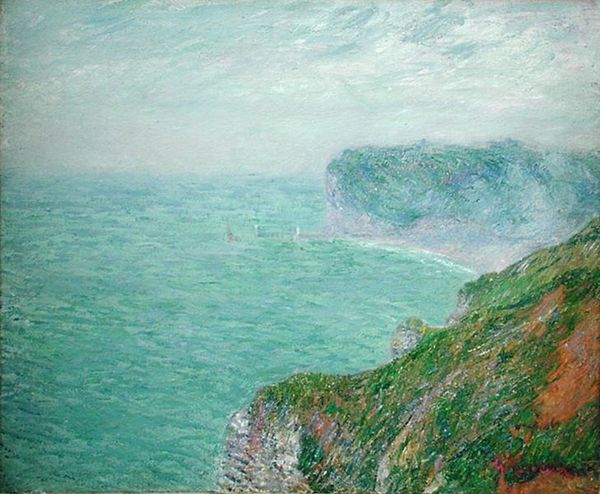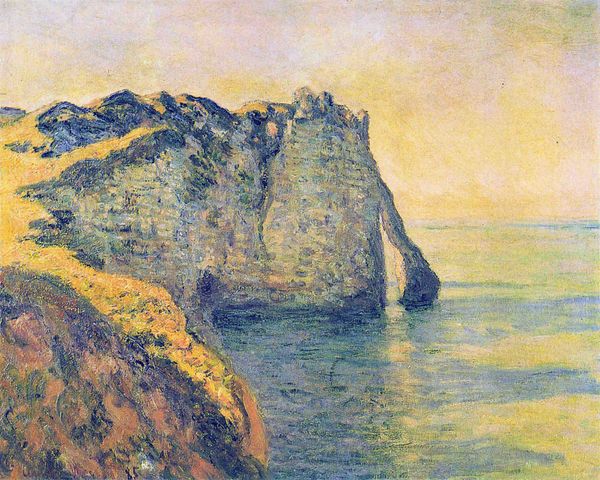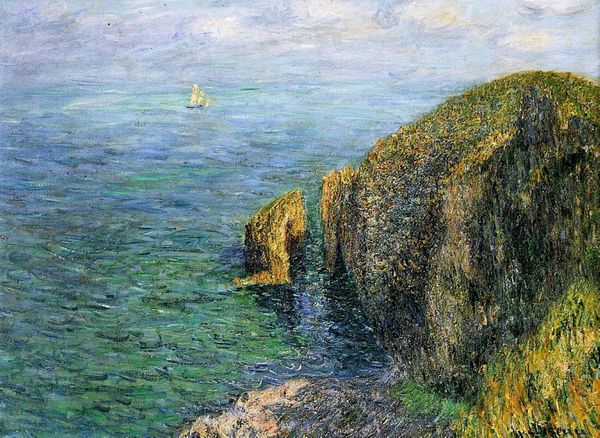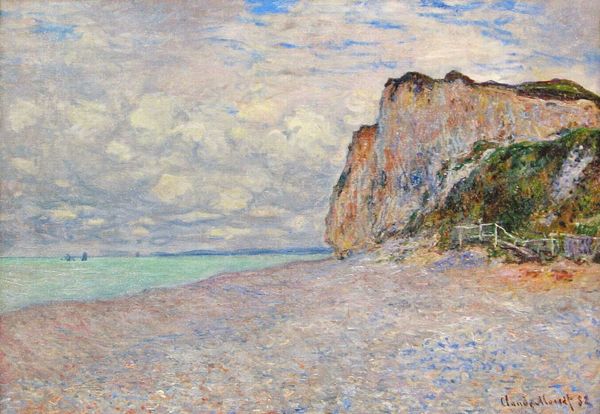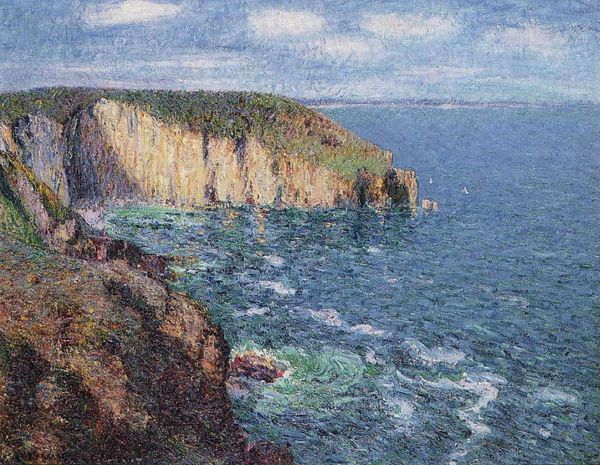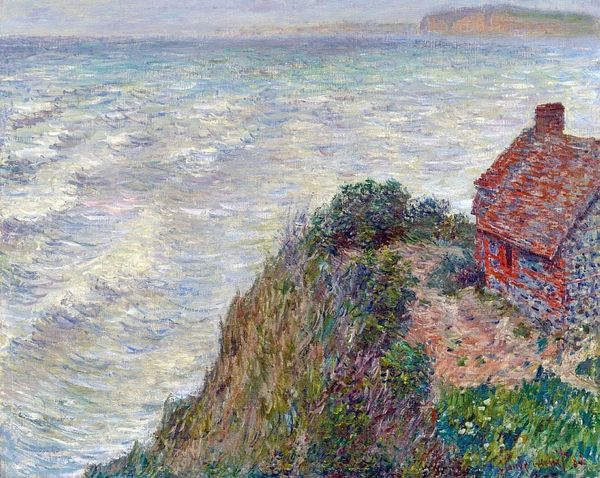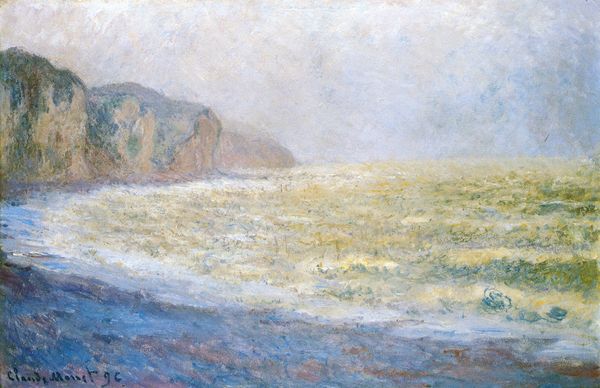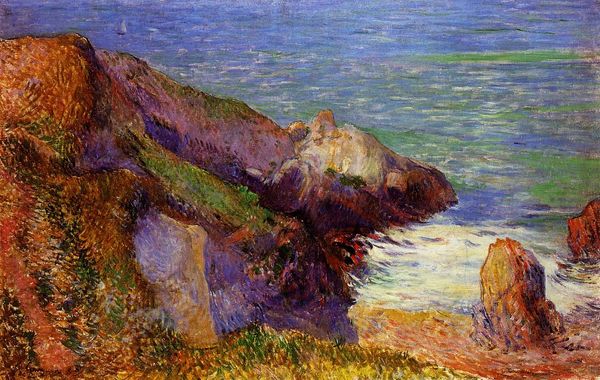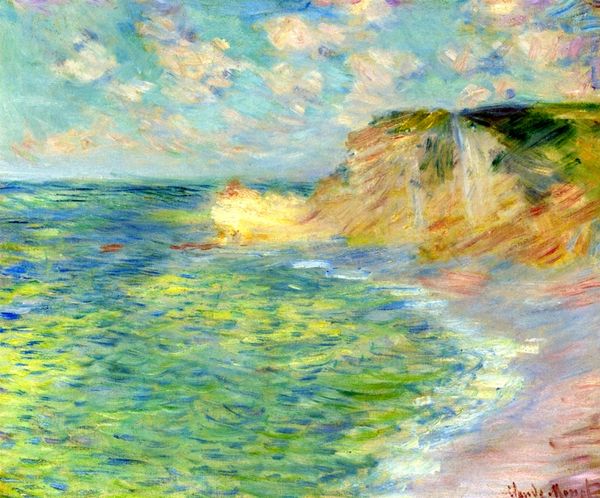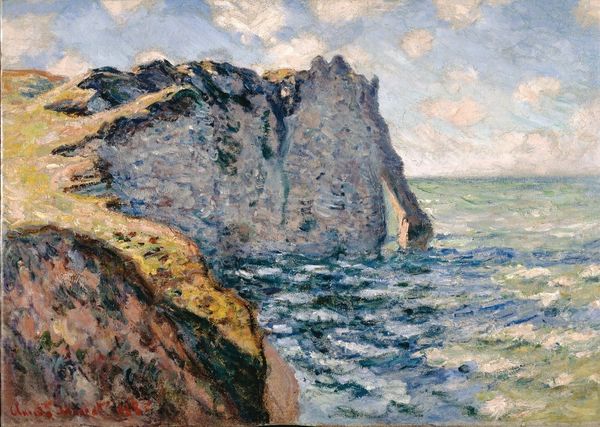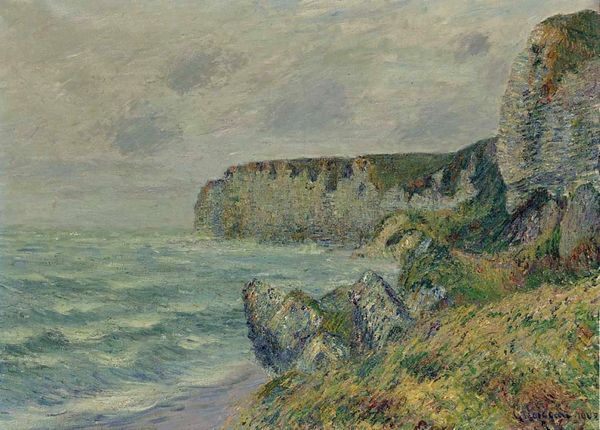
painting, plein-air, oil-paint
#
sky
#
painting
#
impressionism
#
plein-air
#
oil-paint
#
landscape
#
impressionist landscape
#
seascape
#
cityscape
#
post-impressionism
#
sea
Dimensions: 73.5 x 60.5 cm
Copyright: Public domain
Curator: We’re looking at “Shadows on the Sea,” an oil painting that whispers of a windswept coastline. Though undated, it bears the unmistakable signature of Gustave Loiseau. Editor: Mmm, instantly I feel a kind of lonely vastness. It's as if I’m standing right on the edge, smelling the salt, almost wanting to leap into the hazy green below! Is that crazy? Curator: Not at all! Consider Loiseau’s Post-Impressionistic technique. Look at the labor involved. He’s building up the image through tiny, repetitive brushstrokes – strokes that represent not just the *appearance* of the sea and sky but also their inherent, restless energy. We might imagine him battling the elements to create this *plein air* work. Editor: True, there's an obsession there – the dedication of someone consumed. The whole surface seems alive with vibrating color, mostly greens and mauves. And that layering! It reminds me of trying to capture a feeling that's constantly slipping away, like a dream. Curator: And dreams can be hard work! We shouldn't forget the role of color pigments, largely produced through industrial processes at this time, contributing to a certain flattening and homogenization of the visual experience. Loiseau harnesses this modernity even while painting what appears to be an unspoiled coastline. Editor: Interesting. For me, it’s the imperfections that grab me, those subtle shifts in tone, the way the cliff edge dissolves into the mist… almost like memory itself, fractured and beautiful. It reminds me of long summer days. Curator: That’s the inherent contradiction. His almost uniform application flattens, while you and I interpret it in highly subjective, individualized ways. Perhaps that’s the power of landscape: It exists as both real estate, commodity and deeply personal experience. Editor: Maybe... And isn't it wonderful that a splash of color can hold so many stories and feelings. That's why art matters I think. Curator: Indeed. Considering Loiseau’s consistent methodology alongside such deeply emotional, subjective readings, reveals art making, art viewing, and art history itself, as constant sites of material and ideological struggle.
Comments
No comments
Be the first to comment and join the conversation on the ultimate creative platform.
